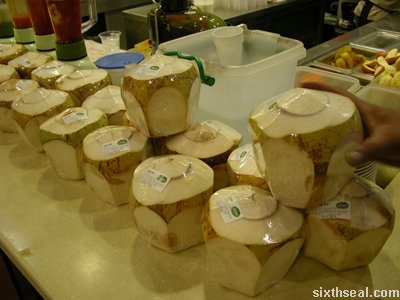
The Top Off coconut experience is commonly available in food
courts…it’s the shrink wrapped coconuts at the drinks counter with
the top partially serrated for easy opening. It’s a very user friendly
coconut.
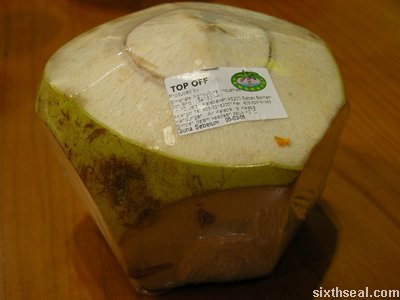
It comes in several varieties – a fully green one (skin on) which
tastes a little tart, a mostly skinned white one which has a sweeter
content, and the Thailand variety which is a small, fully skinned
coconut. I have had all of them, and my personal preference is the
partially skinned one.

The whole coconut is covered with shrink wrap – including the top of
the coconut. You need to remove the shrink wrap before the coconut can
be consumed. The removal of shrink wrap goes according to user
preference – I tend to just tear off the top of the shrink wrap.

Next, you use the side of the provided standard spoon to remove the
“cover” of the coconut. The easy way to do this is to analyze the
partial factory cut top for the largest point of possible entry and
wedge the side of the spoon (the thin side) down, before using leverage
to “scoop” the whole top back up.

It should look like this after that step is completed. Do not, under
any circumstances, allow the top of the coconut to fall back into the
coconut. It should also be noted that this is the most difficult part
of the process, as there is a distinct possibility of causing a faux
pax by twisting too hard and spilling coconut juice all over the place.
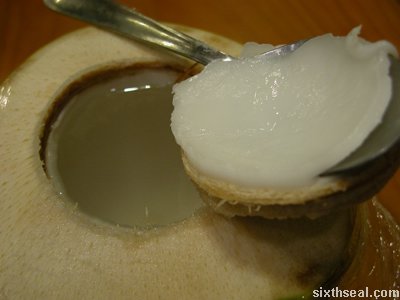
The user may proceed to use the spoon to separate the coconut flesh
from the now separated top for consumption. The flesh of the coconut is
edible, and the top of the coconut contains a significant amount of
coconut flesh…this should be appreciated by eating said coconut flesh
from the top.
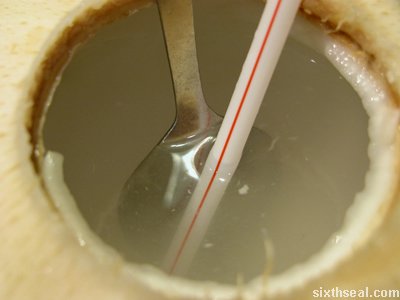
The next step is to insert the (provided) plastic straw into the
open coconut receptacle. The coconut juice can be sipped straight from
the coconut. Optionally, the spoon can be used to harvest more coconut
flesh from the inside of the coconut. It is important to remember that
the entire internal circumference of the coconut is coated with coconut
flesh…which is edible.

The coconut juice should appear as a clear liquid, unless the
coconut has been disturbed in any way (e.g. internal flesh scooped for
consumption, vigorous stirring etc). Do not be alarmed if the coconut
juice turns murky. This is perfectly normal and the coconut remains safe for consumption.
The color change is caused by cross contamination from the coconut
flesh, but this is not as bad as it sounds…since the flesh is edible.
Certain connoisseurs also appreciate murky coconut juice. I reiterate –
murky coconut water is perfectly fine.
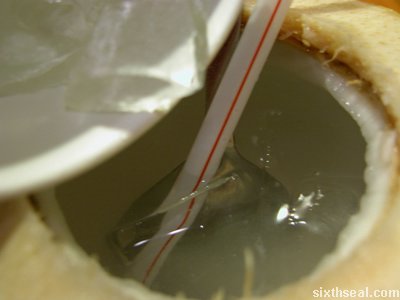
There is an option of adding ice to the coconut for a chilled
coconut drink. The user does this at the risk of diluting the coconut
juice. Coconut connoisseurs frown at this practice, but it is
widely…er, practiced for a colder drinking experience.
Enjoy your coconut.